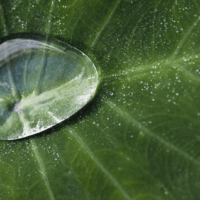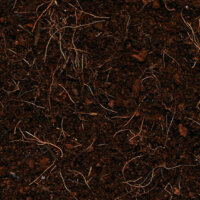This method of growing plants suspends the plant roots in the air and fertigates the plants by misting the roots with a nutrient solution. The advantages of this system are that it is a highly oxygenated system and allows the grower to harvest plant roots without removing the plant. One of the disadvantages is that because very little if not zero media is used, the amount of time that the plants can survive in the event of pump failure is very limited. Also, because the plant roots must stay moist at all times, the pump must run continuously or extremely frequently which consumes more electricity and decreases pump longevity. The aeroponic method is used frequently in plant physiology when harvesting roots is necessitated, but due to the disadvantages of aeroponic methodology the commercial use for plant cultivation is limited. Aeroponics for plant propagation, however, is highly popular due to the rapid growth of roots associated with increased oxygen in the rhizosphere and the lack of media required to generate a new plant.
The ability of a medium or solution to resist change in pH fluctuations.
-

CocoGro SDS
-

Feeding and watering frequency: Drain-to-waste setups and coir based media
How often should you feed and water your plants? When growing plants in a drain-to-waste setup and using a nutrient...
Spraying or misting a plant with nutrient solution which plants absorb through their leaves.
-

Foliar Spraying
Olympians wear high compression swimsuits that are nothing short of technological marvels. They reduce drag and allow athletes to swim...
-

How to acclimatize (harden off) rooted plant cuttings in 7 days
REDUCE HUMIDITYA) Humidity dome with vent: Open vent for 2 days then remove dome on 3rd day.B) Humidity dome with...
-

Kelp
Kelp is a popular plant additive. Understanding what it is and how it benefits plants can help a gardener make...
-

Mixing Nutrients – A Beginner’s Guide
* Keep in mind that some supplements will add to your total EC/PPMs, check the labels for their NPKs, or...
In this method of hydroponics, a thin film of nutrient solution is constantly flowing across the plant roots in a tray or trough. Like aeroponics, this system utilizes very little to zero growing media for plant roots to colonize which in the event of pump failure gives very little time before roots dry out and can lead to loss of crop. The advantage of a NFT system is the high level of oxygen in the root zone and the relative simplicity of the components using for fertigation. This system is most popular for growing leafy greens and herbs at the commercial production level.
-

Nourish your Plants Above and Below with Seaweed
By Derex Q. Zellars | Environmental Scientist Scientific research has confirmed that seaweeds help in increasing yields, drought resistance, frost...
-

NPK: A simple guide
When it comes to indoor and outdoor gardening, it is important to understand the significance of the N-P-K ratio. You...
-

Organics and Minerals: Do you Really Understand What’s Going into your Garden?
Many growers give themselves labels based on the types of inputs they use in their gardens, often referring to “strict...
-

Plant Nutrients
Macro-Nutrients Symbol From Avail to Plants Function in Plants Nitrogen N NO3-, NH4+ Component of amino acids, proteins, nucleotides, nucleic...
A hydro system which circulates or “feeds” nutrient solution from a reservoir over and over again, until the reservoir is either “topped off” with additional nutrients or drained out completely and replenished. Ebb & flow (flood & drain) is the most common recirculating system in hydro, although NFT (nutrient film technique) and drip systems can also recirculate nutrient solution.
-

Selectivity of Plant Nutrient Ion Uptake
The interactions between mineral cations and anions are well understood by chemists, but often overlooked by horticulturists when applying fertilizers...
-

Silica
Silica supplements are a popular addition to nutrient regimens, making plants stronger and less susceptible to environmental and pathogenic damage....
-

Silica in Hydroponics
Silica is the second most abundant element on earth and plays a vital role in optimizing plant health and yield....
-

Temperature and Humidity
In order to learn how to create the best environment for your particular crop it is helpful to understand how...
-

The Soil – Blog Part 2
Hey friends! Welcome back. So after the first Soil Blog post, I was all excited telling a friend of mine...
-

Understanding EC/PPM: Q&A with Blue Lab
We all understand the importance of applying nutrients at the correct strength and the appropriate time to achieve successful crop...
-

Unlocking your plants’ potential with air
Just because air cannot be seen, does not mean that it is not a critical element in the growth and...
-

Vertical Gardening
The stereotypical garden space is a horizontal, flat, well lit area, and while that configuration is useful in many circumstances,...
-

Water Quality for Hydroponics
Water makes up as much as 90% of the mass of a plant- even more in some crops, such as...
A compound that reduces the surface tension of a liquid. Used in hydroponics to help a nutrient solution more easily infiltrate the grow media.
The simplest form of hydroponics is the wick system of fertigating your plants using completely passive methods. In this system, plants draw up the nutrient solution via a fibrous material that is placed in a reservoir. The simplicity of this system is its only advantage because there are no moving parts there is little chance of failure as long as there is water available. The disadvantages of this system are that it does not allow the grower to control rate and frequency of irrigation and during warmer periods the wick system may not be able to keep up with the irrigation needs of the plant. This is the least popular type of hydroponic system and is rarely used at the commercial level.












